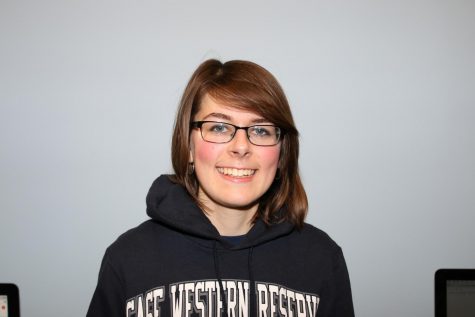Kuntzman: CWRU reorientation modules should have covered more information on everyday life after returning to campus
February 26, 2021
When Case Western Reserve University students returned to campus for each semester of the 2020-2021 academic year, they were required to complete a series of modules outlining basic medical information about COVID-19, new campus procedures and expectations for students. The modules contained information that is certainly important for having a large group of students living on campus during the COVID-19 pandemic, but ultimately didn’t include basic information vital to currently navigating life on campus, such as how to get food from campus dining locations, access buildings and options for accessing groceries. As such, the modules did not serve as a holistic reorientation for students returning to campus.
Prior to the start of the coronavirus pandemic, getting food on CWRU’s campus was a very different experience. Some dining locations allowed students to place orders on GrubHub, but the tendency was for meals to be ordered in person. Coronavirus guidelines have significantly changed the dining process, with most locations now allowing students to order food online and pick it up in person to minimize contact between students and staff. Finding a location to eat was also less of an issue due to the greater dining location availability before social distancing was necessary. For returning students who came back to campus for the first time since the start of the pandemic, providing information about how to order food, as well as providing guidance about changes to dining locations, could have been beneficial instead of requiring students to find out how to get food themselves.
COVID-19 has also led to the opening of some new dining locations on campus, such as the Dosa Room, and the closure of others, such as L3. Creating modules that covered what dining locations are open could have helped returning students know where they could get food. While this information is available online, putting it in the modules would have insured that all students saw it and eased the process of finding information by having it in one place. Ensuring that students knew about changes to the hours of dining locations such as the Den would have been helpful as well.
While housing capacity for students on campus has increased this semester, many students remain outside of university housing in Cleveland. For these students—especially those who may have found off-campus housing on short notice and students moving into campus-owned apartments and suites for the first time—providing information in the modules about accessing groceries in the area could have helped students adjust to being on campus. With the Constantino’s location near campus shut down after the start of the coronavirus pandemic, groceries became less accessible to students without cars. As such, covering options for obtaining groceries near campus could have been very helpful for students.
Accessing buildings has also changed during the pandemic. While not all students may need to leave their dorms often, informing students that some buildings are locked for the semester could have helped students with in-person classes or research know what to expect when returning to campus. Especially since the scanners on some buildings, such as Clark, do not clearly indicate when they have read the Case ID being scanned, it would have been helpful for students to know what they need to do to access buildings.
The student reorientation modules did an excellent job of addressing information regarding the coronavirus and establishing COVID-19 safety expectations for members of the CWRU community; however, given how dramatically life on campus has changed since the start of the pandemic, the modules should have served as a more holistic reorientation as their name suggested to help students transition back to life on campus. The changes to life on campus go beyond new risks and protocols to protect human health, and so any reorientation modules students are required to do should represent these additional changes.


